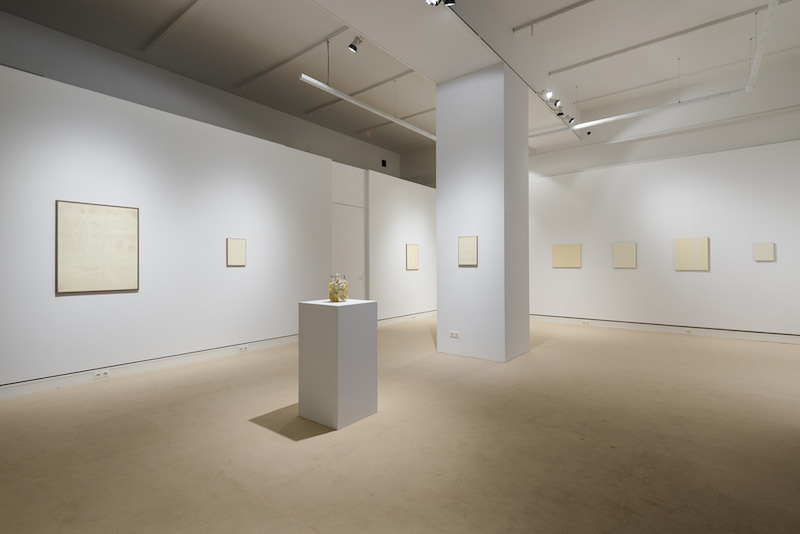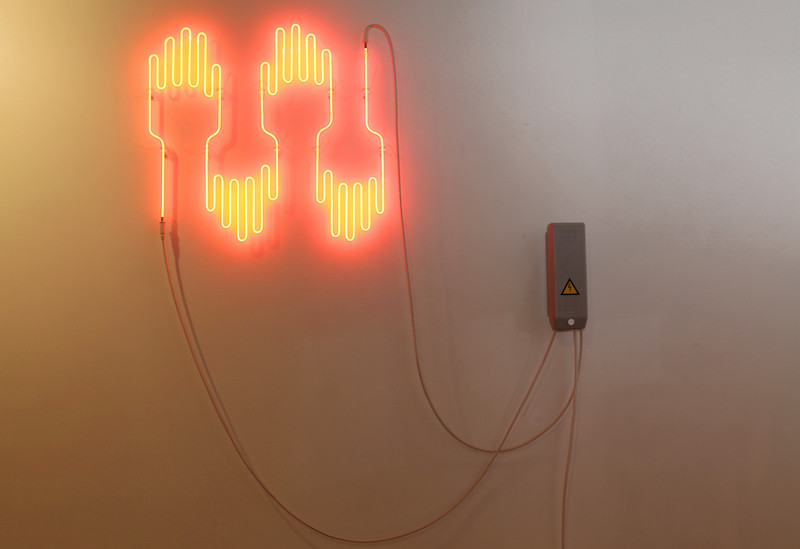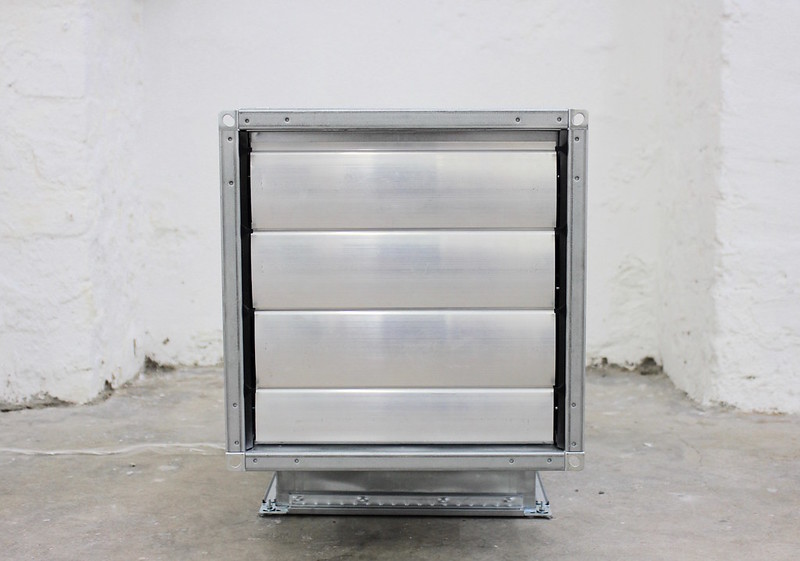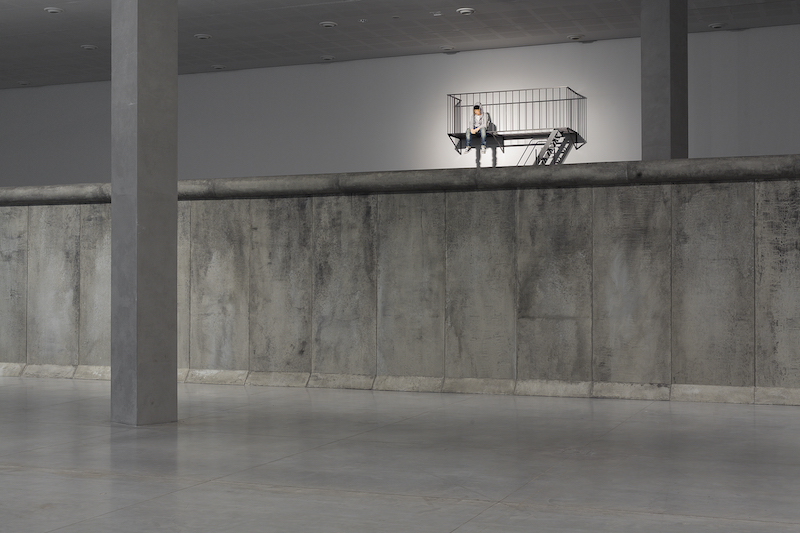
"Cosmic Latte" exhibition at Galerie im Turm, © and courtesy Moritz Frei; photo: Trevor Good
What comes first, the chicken or the egg? Moritz Frei must have asked himself that question, when planning his current exhibition COSMIC LATTE at Galerie im Turm in Berlin. The central work, a half-hour long film, shows Frei forcefully cuddling a rooster while another scene displays an ostrich egg slurping milk in a stop-motion-aesthetic. The film primarily documents the process and development of Frei's show, for which he hired seniors to paint minimalist paintings for him. The exhibit is monotonously beige, it is dedicated to the integration of an older and perhaps forgotten generation, and it eventually questions the value of artistic genius. Frei, who was born in Frankfurt, studied at the HGB Leipzig and now lives and works in Berlin, is an artist working on the threshold between performance, photography and conceptual intervention. Each of his projects tell another narrative and seduce his audiences with irony and sharp social criticism. I spoke to him about his current show and past projects.



